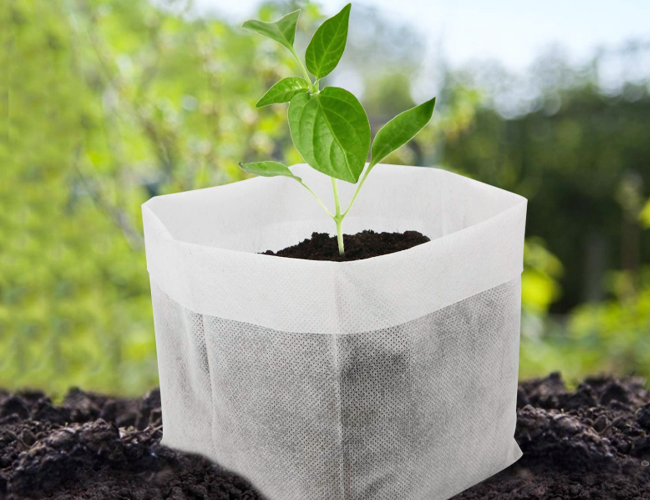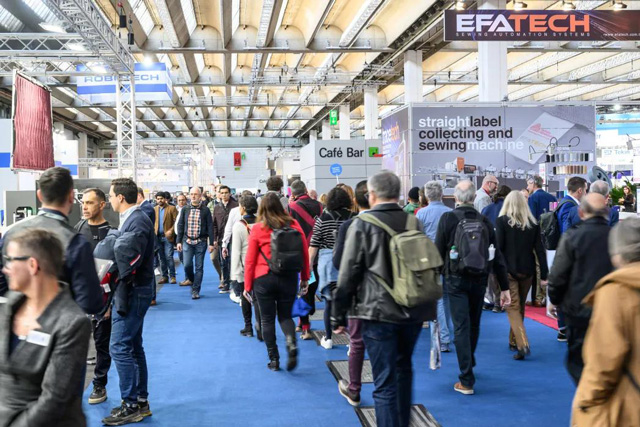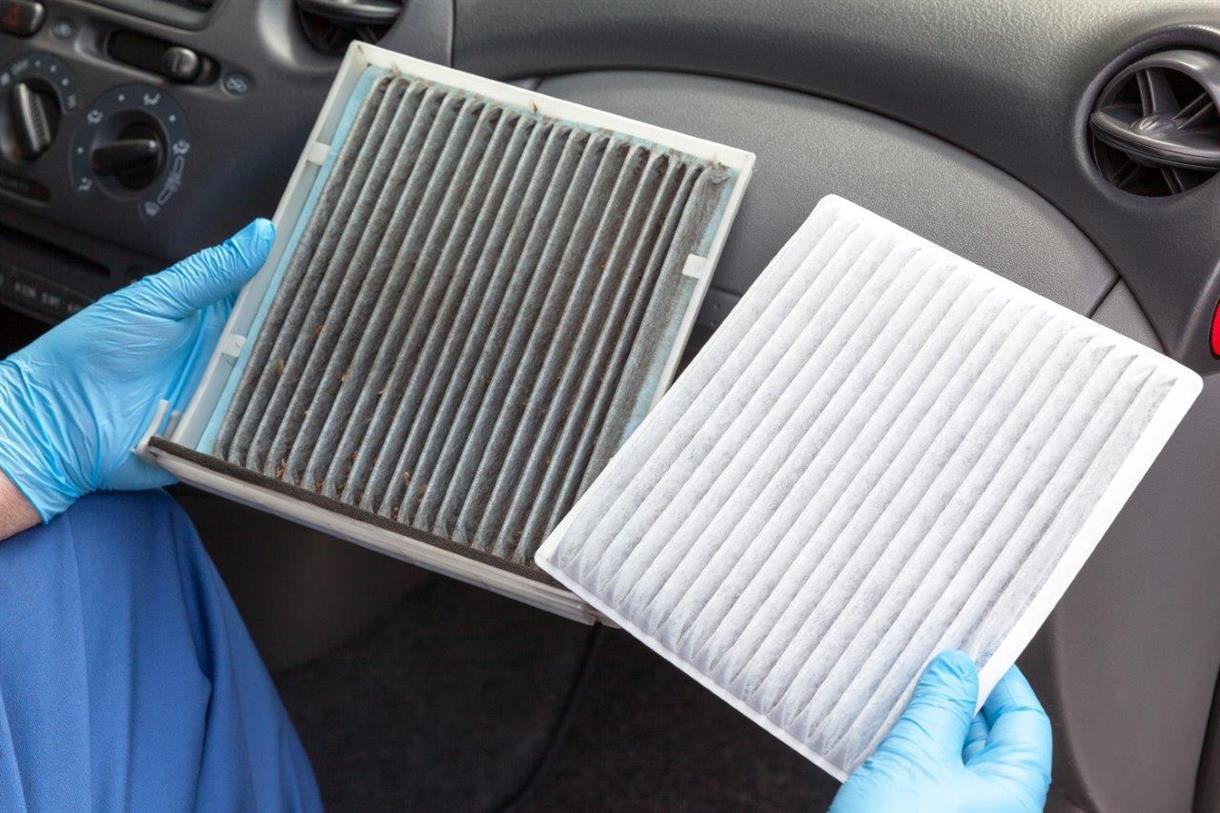
PLA nonwoven is an environmentally friendly nonwoven fabric made from polylactic acid (PLA) fibers. PLA nonwovens have similar properties to traditional polypropylene (PP) nonwovens, but are of interest to consumers and manufacturers around the world because of the environmentally friendly nature of their base material.
Polylactic acid (PLA) is a generic term for a class of polymers obtained by polymerizing starch derived from renewable plant resources (e.g. corn) as the main raw material.

PLA has good mechanical and physical properties, good thermal stability, a processing temperature of 170~230℃, excellent solvent resistance, and degradability. In addition to biocompatibility, products made from PLA have gloss, transparency, good heat resistance, certain bacteria resistance, flame retardancy and UV resistance, and excellent tensile strength and ductility.
PLA pure resin is a translucent or opaque granular amorphous polymer. It is comfortable to the touch, with a melting point of 175~185℃ and a glass transition temperature of 50~65℃.
PLA is composed of starch, which has good biodegradability and can be completely degraded by microorganisms in nature after use, eventually generating carbon dioxide and water without polluting the environment, which is very beneficial to the protection of the environment and is recognized as an environmental friendly material.
When PLA is incinerated, it absolutely does not release toxic gases such as nitrogen compounds and sulfides. The human body also contains lactic D acid in monomer form, which fully demonstrates the high safety of this decomposing product.
PLA has its own numerical identification number, which is "7" according to the Society of Plastics Industry (SPI).
Where to buy PLA nonwoven fabric? The following are popular selling PLA nonwoven fabric products, you can view detailed parameters, message quick quotes, quality goods information, and product rich and complete certificates.
You can click on the image or name below to view the product's detail page.
 |
100% Biodegradable PLA Non Woven Fabric |
PLA has excellent biocompatibility and biodegradability and is made of PLA fiber through a non-woven process. It is a green material recognized as environmentally friendly and sustainable in the 21st century and is being explored and developed in-depth as an alternative to general-purpose plastics in countries all over the world, and is gradually gaining popularity and being used more and more widely.
PLA nonwoven fabric can be used in agricultural mulching materials, insect-proof nets, vegetable bags, nursery trays, films and ropes for construction, fishing nets kelp farming nets, fish lines, etc. It has air permeability and excellent light permeability, which can maintain the growing environment of plants and increase the yield.
PLA non-woven fabric is suitable for medical masks, surgical gowns, dressings, medical bandages, sutures for surgical medical use, medical device fixation materials, hygiene products, etc.. It has good breathability and comfort, and can effectively prevent infection.
It can be made into various kinds of tableware such as cups, plates, dishes, pots, pans, etc.
Housing for electronics such as computers is also used for equipment working at high temperatures, such as LCD projectors, etc.
PLA non-woven fabric is suitable for food container paper plastic film, pharmaceutical packaging, household garbage bags, packaging film, gift packaging, and so on. It has good waterproof, air permeability, and oil resistance, which can protect the quality and hygiene of the packaging.
Dyeable and biocompatible silk yarn knitted fabrics, nonwoven fabrics, and other garments.
PLA nonwoven can be used for interior decoration materials such as wallpaper, curtains, carpets, etc. It does not contain harmful substances and has good durability and aesthetics.
Biodegradable, environmentally friendly and non-polluting, soft and skin-friendly, smooth cloth surface without flaking, good uniformity, good air permeability, and good water absorption.
1. Biodegradable: PLA nonwoven fabric is made of polylactic acid (PLA) fiber, which is a biodegradable material that can be decomposed into carbon dioxide and water under a specific environment and will not cause pollution to the environment.
2. Light and soft: PLA non-woven fabric is soft and light, with good breathability and moisture resistance, and can be used to make fabrics and packaging materials, etc.
3. Anti-bacterial and anti-odor: PLA non-woven fabric has good anti-bacterial properties, which can effectively inhibit the growth of bacteria and has a good anti-odor effect.
4. Good durability: PLA non-woven fabric has high durability, is not easy to wear and tear, and can be used repeatedly.
5. Heat resistance: PLA non-woven fabric can withstand high temperatures up to 100℃, which is suitable for making products used in a high-temperature environment.
6. Dyeability: PLA nonwoven fabric can be dyed and other treatment processes to change the color and pattern, with a good aesthetic effect.
7. Customizable: PLA nonwoven fabrics can be customized according to different needs, and different performance and appearance effects can be achieved by changing parameters such as fiber thickness, density, and color.
PLA (polylactic acid) is a biodegradable plastic material commonly used in the manufacture of products such as food packaging, medical supplies, and disposable tableware. Current research shows that PLA itself is safe for humans and does not cause direct harmful effects on humans.
PLA is made from naturally occurring lactic acid molecules that are polymerized and can be broken down into carbon dioxide and water in nature, thus offering certain advantages in terms of environmental protection. Compared to traditional plastics, PLA does not release toxic or carcinogenic substances and does not negatively affect human health. In the medical field, PLA is already widely used in medical devices such as sutures and artificial bones.
However, it should be noted that some chemicals used in the production of PLA may have some impact on the environment and the human body. For example, chemicals such as benzoic acid and benzoic anhydride are used in the production of PLA, and these chemicals may be toxic to humans at high concentrations. In addition, the production of PLA requires a large amount of energy, and if energy is used unreasonably, a large number of greenhouse gases and other pollutants will be produced, which will have an impact on the environment.
Therefore, PLA itself is safe for human beings, but environmental protection and safety issues need to be paid attention to during the production and use process.
PLA cups are cups made of an environmentally friendly material whose main component is polylactic acid, which is usually used to replace traditional plastic cups.
From a safety point of view, PLA cups are relatively safe because they are a biodegradable material that does not contain toxic substances or heavy metals and does not produce harmful gases.
1. Make sure the cup is clean: Make sure the cup is clean and free of residual food or liquid before use.
2. Do not heat: PLA cups are not suitable for heating, as high temperatures may cause the cup to deform or release harmful substances.
3. Do not place strong acid or strong alkali solutions: PLA cups are less resistant to corrosion and are not suitable for placing strong acid or strong alkali solutions.
PLA nonwovens are made of polylactic acid (PLA), a biodegradable polymer that can decompose under certain conditions. However, the time it takes for PLA nonwovens to decompose depends on a variety of factors, such as environmental conditions, material thickness, exposure time, etc.
In general, PLA nonwovens take a long time to decompose in the natural environment, which may take several years or even more than a decade. The specific decomposition time is also influenced by the ambient temperature, humidity, light and other factors. The decomposition of PLA nonwovens may be accelerated under specific conditions, such as in composting facilities with high temperatures and high humidity.
It should be noted that the debris and particles produced by the decomposition of PLA nonwovens may have an impact on the environment, so care needs to be taken to dispose of them in the right way.
PLA is a biodegradable polymer whose service life depends on a variety of factors such as storage conditions, ambient temperature, humidity, exposure time, etc. Generally speaking, unused PLA products can be kept under suitable storage conditions for several years or even longer. During storage, adverse environments such as high temperature, high humidity, and direct sunlight need to be avoided to prevent degradation and aging of the material.
When a product made of PLA is used, its life span will depend on the specific application and environment in which it is used. For example, packaging materials made of PLA may be used only once and then discarded, while 3D-printed models made of PLA can last much longer, depending on the complexity of the model, material thickness, and the environment in which it is used.
PLA (polylactic acid) is a common 3D printing material that is easy to use, inexpensive, environmentally friendly, and can be used to make many different types of items. However, there are times when PLA should not be used. here are a few situations.
1. High-temperature environments: If you need to manufacture parts that need to withstand high-temperature environments, such as engines or hot water pipes, PLA may not be the best choice. This is because PLA has a relatively low melting point, usually between 60°C and 70°C.
2. Long-term exposure to sunlight: Although PLA is environmentally friendly, it is not resistant to UV radiation. Frequent exposure of PLA products to sunlight will cause it to yellow and gradually lose its strength.
3. Chemical resistance: PLA is not compatible with certain chemicals (e.g. acetone). PLA may not be the best choice if the part needs to withstand chemical corrosion or exposure to chemical environments.
4. High precision requirements: PLA has a relatively large coefficient of thermal expansion and contraction, so if you are manufacturing high and very high precision parts, PLA is not the best choice.
5. Strength requirements: Although PLA is very strong, it may not be the best choice, and if you need to manufacture parts with high strength requirements, such as suspension components or stressed parts, you may need to use other materials.
In conclusion, although PLA is a good general-purpose printing material, it is not the best choice in all cases. When choosing a material, you should select the most suitable material for your application needs.
Yes, it is. Polylactic acid (PLA) is a biodegradable material, usually made from plant-based raw materials such as corn starch. Compared to traditional plastics, PLA degrades more easily in the natural environment and has less impact on the environment. Also, PLA can be recycled to reduce waste and resource consumption.
PLA can be recycled in a number of ways. First, unused PLA products can be collected and reused. For example, tableware and packaging materials made from PLA can be recycled and reprocessed into new products, such as recycled PLA pellets and recycled plastic products.
Second, PLA can also be chemically recycled. Chemical recycling involves breaking down waste PLA material into monomers at high temperatures and pressure and then resynthesizing the new PLA material. This method allows for the recovery of more PLA material, but requires significant energy and chemicals.
Overall, PLA can be recycled to reduce waste and resource consumption, but the recycling and reuse process needs to be scientifically managed and controlled to ensure the safety of the environment and human health.
This is the end of the introduction of PLA nonwoven fabric, if you want to know more about the fabric, welcome to follow us. We also have many kinds of fabric products for you to choose from, so come and Contact US.
All Rights Reserved: https://www.groupgf.com/info-detail/polylactic-acid-pla-nonwoven
Copyright Notice: This is an original (translated) article from G&F Group Inc., please indicate the source from G&F GROUP INC... If there is any infringement, please contact us first.
 Techtextil & Texprocess Rounded Off
Techtextil & Texprocess Rounded Off
 Nonwovens in daily life ----- filtration
Nonwovens in daily life ----- filtration
 Nonwovens in daily life ----- automotive
Nonwovens in daily life ----- automotive
 What is SAP – superabsorbent polymers
What is SAP – superabsorbent polymers